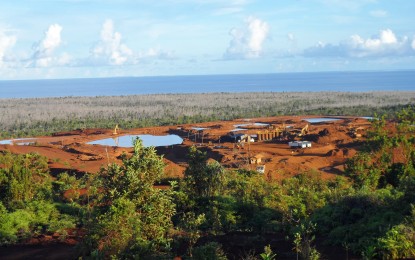
MINING. A mineral extraction site in Homonhon Island, Guiuan, Eastern Samar in this March 19, 2021 photo. Eastern Samar Governor Ben Evardone reiterated his call to give the host local government units the excise tax collected from mining operations on the island. (Photo courtesy of Prof. Nestor Castro)
TACLOBAN CITY – Eastern Samar Governor Ben Evardone reiterated his call that host local government units should have a share of the excise tax collected from mining operations in Homonhon Island in Guiuan town.
In a statement issued Wednesday, Evardone disclosed that the host local governments have yet to receive their share of the excise tax collected by the national government from mining companies operating in Homonhon Island.
Four mining companies are actively operating in Homonhon, according to Evardone. These are Techiron Resources, Inc., Emir Mineral Resources Corp., King Resources Mining Corp., and Global Min-met Resources, Inc.
These mining firms had combined earnings of PHP9.3 billion last year, according to Evardone.
As mandated by the National Internal Revenue Code (NIRC) of 1997 (Republic Act 8424), an excise tax of 4 percent will be imposed on extracted or produced minerals or quarry resources based on the actual market value of the gross output of these products at the time of their removal.
An excise tax is a tax on the production, sale, or consumption of a commodity in a country.
Under the Local Government Code of 1991, local governments are entitled to 40 percent of the gross earnings from “mining taxes, royalties from mineral reservations, forestry charges, and fees and revenues collected from energy resources” in their areas.
The collected tax will be divided among local government units hosting the mining operations, 40 percent of which is for the village, 30 percent for the municipality, and 30 percent for the province.
“The share for local governments is a big help to realize development projects, such as road concreting, water supply, and school buildings, among others,” the governor said.
He urged all mining companies operating in the province to strictly comply with existing and relevant environmental laws.
The 20-km.-long Homonhon Island is known for metallic minerals. In 2021, mining firms extracted 605,176 metric tons of nickel ore and 19,105 metric tons of chromite from the island. (PNA)
